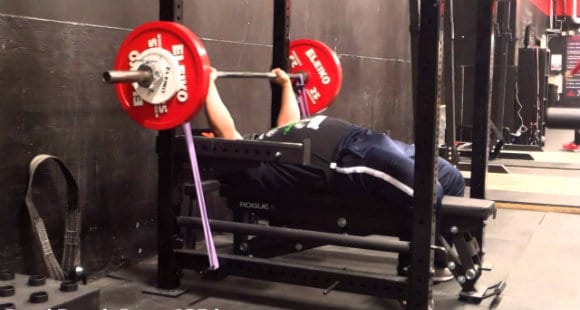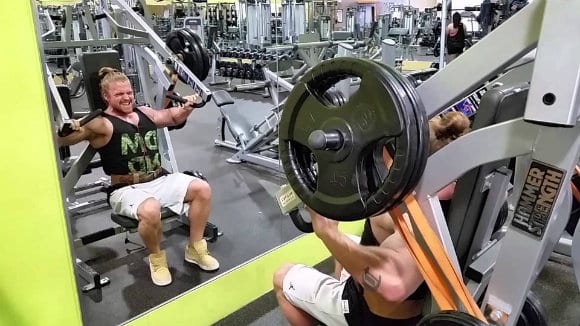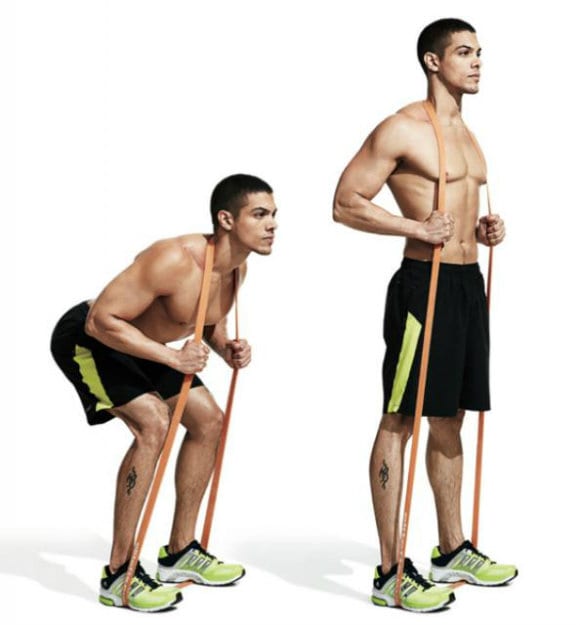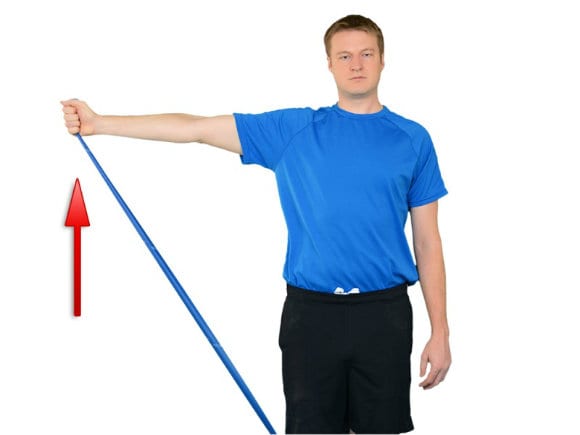By healthiergang writer , former competitive athlete and currently Bodybuilding athlete (Bikini category).
Fitness bands
We are seeing a strong popularity of the use of bands in the gym. Effectively these tools have traditionally been limited to substantially different types of work that did not have as their purpose the search for hypertrophic development at the muscular level. They have been great friends of us women for years, especially when we were preparing, around April / May, to do some more exercises to pass the costume test.
In fact, the elastic does not have the brutal and bad air of barbells and cast iron, on a psychological level this helps, not a little.
In addition to this, rubber bands have been famously used for rehabilitation purposes. The type of contraction, which we will now analyze, in fact allows a self-regulating load management based on the needs of the (in this case) patient [4].
In recent years, all this has changed profoundly. Despite the literature has always proven extremely effective of these tools for Force and Hypertrophy adaptations, applications in this sense have only recently come to the fore, bringing new interest in these tools. But let's initially see what we are talking about and what differences there are on a mechanical and physiological level.
operation
First step to understand: the rubber bands generate tension, exactly how cables do and how handlebars do. There is no rain on this. I would also like to add that the tension can be extremely strong at times. Yes girls, even worse than the barbells!

Second piece: the voltage is not constant. I speak only from the point of view of the force generated by the elastic because, logically, the perceived tension is always inconstant given that along the arc of movement (the so-called ROM) the levers change causing the muscle to work harder or less. Specifically, this tension increases with the progressive increase in length of the elastic. Do we want to do some physics just to make ourselves professional? So be it!
The force generated by the elastic can be found in the formula
F = -k x
(where x = displacement and k = elastic constant) [5]
The elastic constant is fixed, typical of the elastic. We will therefore have that with a displacement equal to 0 the force generated by the elastic will be zero, as the displacement increases (we will stretch the elastic) it will increase proportionally to the elastic constant. In essence, very strong elastic are those with a very high elastic constant.
On a physiological level, this type of tension affects muscle contraction. The shortening of the muscle will be constant while the tension will increase. Basically there is no relationship of proportionality between the two parameters. This type of contraction is called auxotonic contraction [1] [2] [3].
The example can be given by crosses with rubber bands: as the chest (large pectoral to be more scientific) gets shorter, the elastics get longer and generate greater tension.
Practical Applications
Let's try to see what are the possible practical applications of this type of work. First of all we need to understand if it is a better or worse system than free weights. In addition to the field of rehabilitation where, in fact, it lends itself very well, we analyze the training area of Strength and Hypertrophy.
Therefore, to promote adaptations in this sense, what is needed is to reach a certain (high) tension, therefore load intensity, for a given time or number of times (repetitions).
As we have seen this is certainly possible in the case of the rubber bands where, however, problems arise from the ROM. In fact, the voltage change will generate different intensities in the different sections of the ROM making us find some points too easy or others too difficult. Basically we risk generating less than optimal work overall.
Don't panic though. What we must understand is that these ways of working are absolutely not alternatives but cumulative to working with free weights or machines. Basically the rubber bands are inserted, most of the time, as an addition and not as a replacement to our training protocol.
Let us dwell on the crosses on cables with elastic bands, analyzing the practical application, what happens? Our athlete takes the rubber bands and begins with the exercise, at the beginning, at the point of maximum stretching of the muscle, the tension is mild, as there is contraction the tension increases. It will result a change in intensity which will lead, during the execution of the series to a concentration of the effort in a very specific ROM (the last stretch).
The muscle, therefore, will work mainly in that stretch but, in any case, on the whole ROM!
This was meant to be just an example but there are different ways of inserting rubber bands into a programming definitely effectively. Let's see them!
Method of use
So let's see in practice how to intervene. We generally have 3 mode:
? Bands Loading. For example, bench presses with bands.
It will result in a double stimulus, a “classic” deriving from the exercise, to which the intervention of the rubber bands is added. This increases as the dumbbells move away from the torso (the elastic gets longer!). We can use this technique in cases where at the point of minimum tension of the rubber bands are therefore actually too soft and we therefore need to ensure a given load at that point [6] [7].
? Bands Deloading. For example the Squat with the bands fixed at the top and on the barbell
Here the concept is exactly the opposite. The intent is to lighten the load in a given ROM and then concentrate the work on another stretch. The possibilities are to work with supra-maximal loads by decreasing the effort at the point of maximum muscle tension (in the example the tension decreases as it descends approaching the parallel) [8] [9].
? Bands of salt. As in the example done with the crosses with rubber bands [10] [11].
I know, you are wondering .. but sorry, which of these is the best?

Here too a general discourse is difficult. On the one hand, there are all possible solutions to apply the concept of the variation of the stimulus, especially when working in multi-frequency and in particular when working at the performance level on the gesture.
However, if we want to lay theoretical foundations, we should think about two factors: the change in tension that occurs in certain gestures (for example in crosses with dumbbells we have a decrease in tension when the movement is "closed" as the vertical component of the force exerted by the pectoral major decreases) and the variation in tension given by the more or less favorable position of the muscle (for example in the Squat the muscle works "better" on the load in the final part of the ascent rather than overcoming the parallel).
In short, taking into consideration all these factors we can try to "Manipulate" the tension in the various sections of the movement playing on the stimulus obtained at the muscle level.
Last clarification, the intervention of the cables is often obtained also with chains (which are certainly more effective!). For example in the squat they attach to the sides of the barbell and, during the ascent, the portion of the chain that discharges to the ground decreases and there will be an increase in the total weight lifted (“bands loading”).
The Best Exercises
Finally, let's see what are i 3 best exercises that we can propose.
#1 Hammer Chest Press - Bands Loading. Loading the chest press with the rubber bands [6].

#2 Good Morning - Bands alone. Using the rubber bands instead of the barbell [12].

# 3 Scapular adduction - Bands alone. Great exercise for shoulder health [13].



























